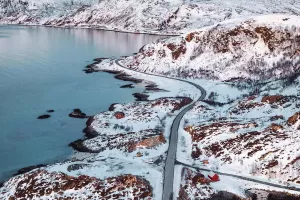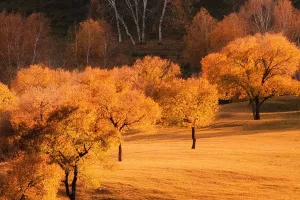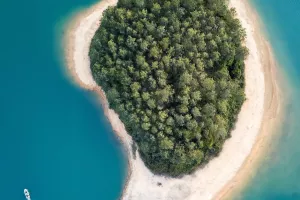On September 8, 2014, the International Association of Ancient Trails (IAU), together with many organizations, released the candidate list of the "Top Ten Ancient Trails in the World".
Its important basis is the ten famous ancient routes with outdoor adventure value and rich historical connotations that have been gradually excavated and sorted out by professional outdoor professionals in the course of decades of outdoor exploration.
Here are six of the most famous ancient roads.
1. Silk Road (Asia, Africa, and Europe)
The name of the Silk Road was proposed by the German geologist Richthofen in 1877. It originally referred to the "traffic route of the Western Regions between China and the Hejian region and between China and India from 114 BC to 127 AD, mediated by the silk trade".
The traditional Silk Road refers to starting from Chang'an (now Xi'an), the famous ancient capital of China, through Central Asia and West Asia, all the way to Europe or Africa.
The Silk Road is nearly 8,000 kilometers long and passes through dozens of countries. It is an ancient trade route with a history of more than 2,000 years.
2. The Road of Frankincense (Asia, Africa, and Europe)
The "Frankincense Road" is an ancient trade route from more than 2,000 years ago. Frankincense is a resin produced by the olive plant frankincense wood containing volatile oil.
It turns yellow after air-drying and has a fragrant smell. The main producing areas of frankincense are Oman, Somalia, Yemen, and the Arabian Peninsula. The frankincense road has two routes, the sea route, and the land trade route.
It is an extremely important trade route in ancient times, but now little is known.
3. Ancient Roman Roads (Europe)
During its prosperous days, the Roman Empire was well-connected. Today, these former roads have left many monuments, which are very worthwhile for us to interpret the important history that has affected the world while walking.
An important part of it is the Appian Way. The Appian Way was an ancient road connecting Rome and Brindisi, the port of Apulia in southeastern Italy, in ancient Rome.
As a strategic road, it played an important role in the expansion of the Roman Empire.
4. The Road to Salt (Africa)
The Sahara Desert in Africa, located in the northern part of the African continent, is the sunniest place in the world, as well as the largest and harshest desert in the world.
It is 5,600 kilometers long from east to west, about 1,600 kilometers wide from north to south, and has a total area of about 9,065,000 square kilometers, accounting for about 32% of the total area of Africa.
It can fit the entire United States into it. On this road, until the beginning of the 20th century, there were salt merchants who traveled across Africa every year with a procession of 20,000 camels.
5. Queen Charlotte Trail (Oceania)
New Zealand has a pleasant climate, fresh environment, beautiful scenery, various tourist resorts, rich forest resources, and changing surface landscapes. It is known as the most beautiful hiking paradise in the world.
There are many great walks in New Zealand, some of which are not only well-equipped but also retain a lot of historical sites.
The Queen Charlotte Trail is 71 kilometers long and is famous for its spectacular scenery, diverse landforms, historic landmarks, vibrant natural bush forests, and New Zealand's exotic wild plants.
6. The Inca Trail (Americas)
Machu Picchu is an ancient city of the ancient Inca Empire in Peru. Its ruins were listed as a world cultural and natural heritage by UNESCO in 1983, and it was also selected as the "New Seven Wonders of the World" in 2007.
The Inca Trail was a mountain road built by the Inca Empire along the Andes between 1438 and 1532. Starting from the round castle of Sacsayhuaman on the edge of Cusco, it has a total length of two or three thousand kilometers.
This was the communication artery for the rulers at that time to convey the decree, and for the Incas to produce, live and trade.


